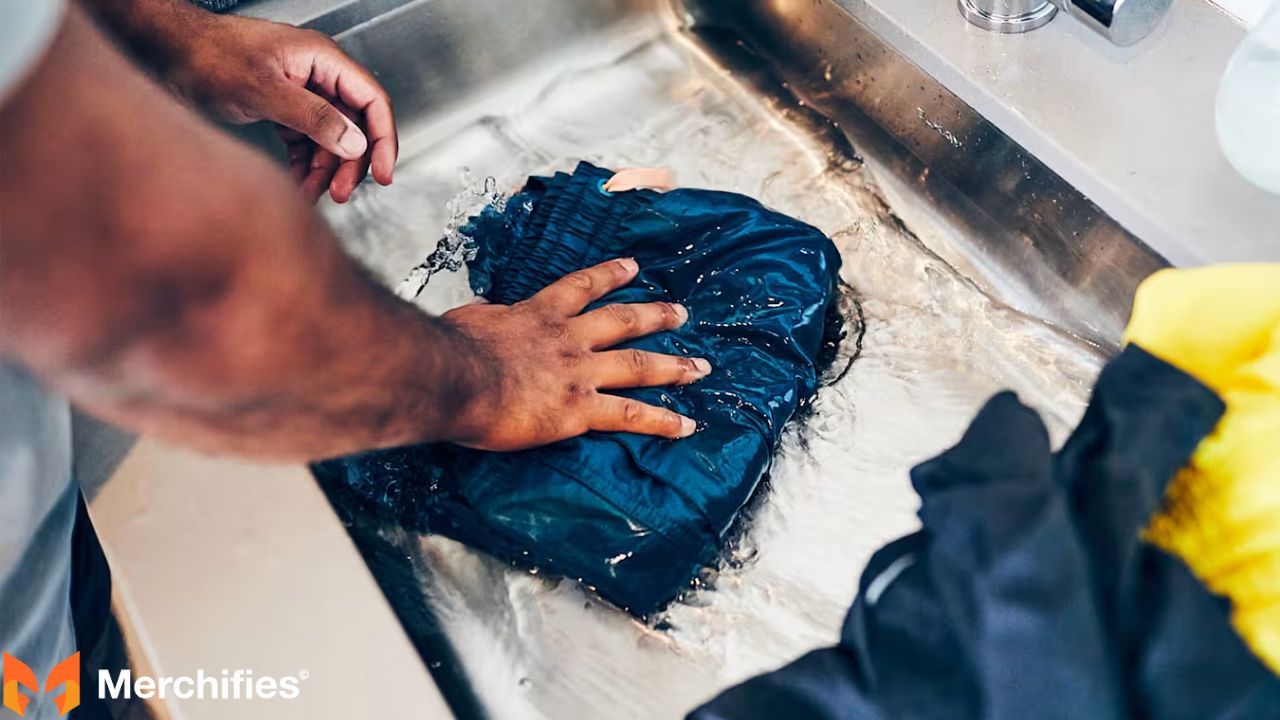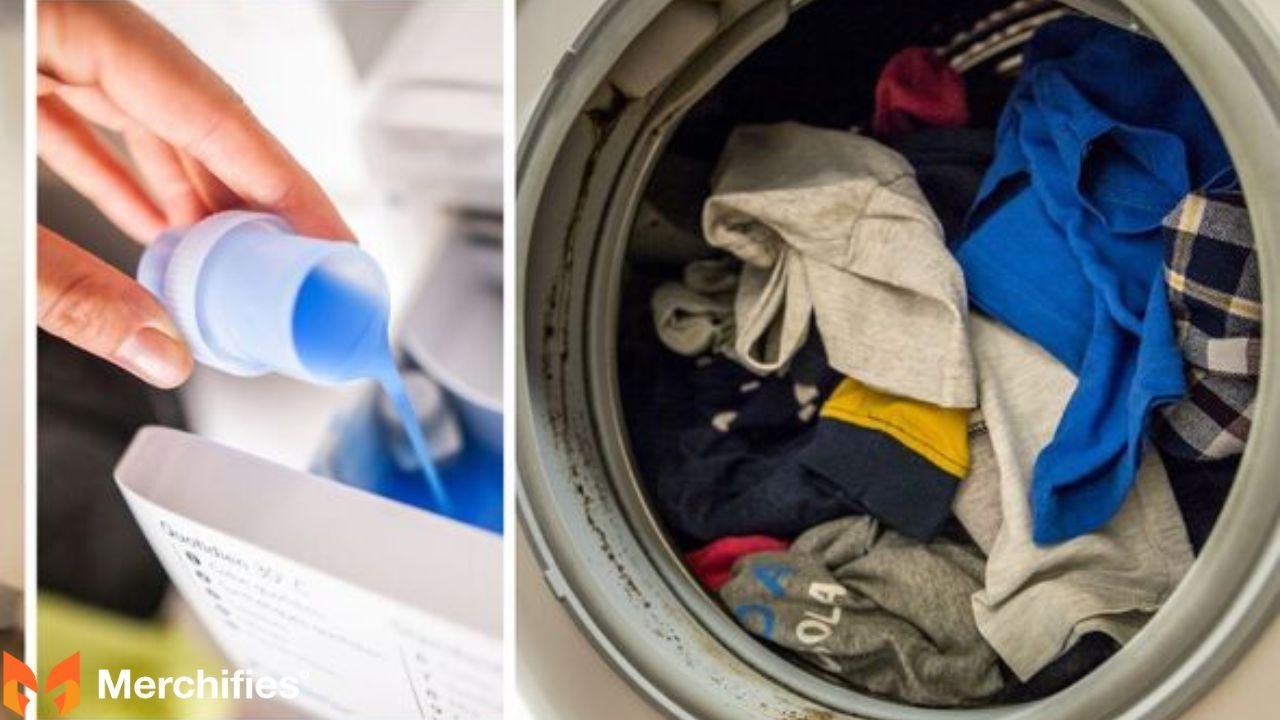How to Wash Veteran Shirts: A Complete Guide to Long-Lasting Prints
Learn how to wash veteran shirts properly to preserve colors and prints. Follow care tips for long-lasting quality, comfort, and patriotic pride.

Blog Post Contents
You bought that veteran shirt to honor service. Then you washed it wrong. The eagle graphic cracked. The flag faded to pink. The unit insignia peeled off.
One wrong wash ruins prints worth $25-40. Heat, harsh detergent, and basic mistakes destroy military graphics faster than regular t-shirts.
This guide shows you exactly how to wash printed veteran shirts to keep graphics sharp for 200+ washes. You'll learn which methods work for different print types and how to keep graphic t-shirts long lasting.
Why Veteran Shirts Need Special Care
Veteran shirts carry emotional value regular t-shirts don't. That Marine Corps shirt belonged to your father. The Navy tee commemorates your brother's deployment. You can't just buy another when the print cracks.
Military graphics are complex: multi-color designs, metallic inks, detailed insignias. Eagle feathers, flag stars, unit crests—each needs protection.
Proper care extends shirt life 2-3 times. From 50 washes to 150+ washes. The difference between one year and five years of wear.
The 5 Deadly Mistakes That Ruin Veteran Shirt Prints
Five washing mistakes destroy more veteran shirts than everything else combined. Avoid these and your prints last years longer.

Mistake #1 - Washing Immediately After Purchase
Custom prints need 24 hours to cure. The ink must fully bond to fabric.
What happens when you wash too soon:
- Print fails and doesn't adhere properly
- Cracks appear after the first wash
- Colors bleed into surrounding fabric
- Adhesive doesn't hold long-term
The fix: Wait minimum 24 hours before washing new veteran shirts.
Online orders usually arrive safe—most POD companies ship 2-3 days after printing. The curing happens during transit. But if you buy at a local event or custom shop, ask when it was printed. Fresh prints need patience.
I learned this the hard way. Bought a custom Navy veteran shirt at a military reunion. Washed it that night because I wanted to wear it the next day. Half the anchor graphic washed off. The printer explained the 24-hour rule. Expensive lesson.
Check your packaging. Some sellers include printing date stickers: "Printed [date] - wait 24 hours before washing."
Mistake #2 - Using Hot Water
Hot water breaks down ink, fabric fibers, and adhesive bonds simultaneously.
What happens with hot water:
- Graphics fade three times faster than with cold water
- Colors lose vibrancy within 10-20 washes
- Prints crack prematurely
- Fabric shrinks—but the print doesn't shrink with it, creating distortion
- That perfectly centered eagle? Now it's off-center and warped
Temperature damage by print type:
- Screen print: Hot water dries ink and creates brittleness
- DTG: High heat causes ink to crack and fade rapidly
- DTF: Adhesive weakens and print peels at edges
- Heat transfer: Most vulnerable—hot water destroys these in 5-10 washes
- The fix: Cold water only. 30°C (86°F) maximum for all print types.
Cold water preserves prints and saves money. Your utility bill drops $50-100 yearly switching to cold water washing. Win-win.
I switched to cold water exclusively five years ago. Every veteran shirt I own looks nearly new. My brother still uses hot water—his shirts look five years old after one year of wear.

Mistake #3 - Fabric Softener (The Silent Print Killer)
Fabric softener feels good on regular clothes. On printed veteran shirts, it's poison.
The problem: Chemicals in fabric softener coat fabric and print. The coating degrades adhesive holding ink to fabric.
The progression:
- Print feels slippery after a few washes
- Then it starts peeling at edges
- Eventually entire graphic flakes off in chunks
- Impact on military graphics: Detailed elements suffer most. Eagle feathers disappear first. Flag stripes separate. Small text vanishes. Within 20-30 washes, you've got a ghost image where a sharp print used to be.
The fix: Never use fabric softener on printed veteran shirts. Not liquid softener. Not dryer sheets. Neither one.
Alternative: White vinegar. Half cup per load in the fabric softener dispenser. Vinegar softens fabric, brightens colors, and preserves prints. Natural, cheap, effective.
My grandmother taught me the vinegar trick. She's been washing clothes for sixty years. Her printed shirts from the 1980s still look vibrant. Vinegar works.
Mistake #4 - High Heat Drying
Dryer heat dries out ink and causes thermal stress. The fabric shrinks around a rigid print that can't shrink. Disaster.
Heat damage timeline:
- After 5 washes: Print feels slightly stiff, minor surface cracks in large solid areas
- After 10 washes: Visible cracks in flag stripes, eagle details, text edges
- After 20 washes: Large cracks across chest graphics, peeling at print edges
- After 30 washes: Print chunks flaking off, colors severely faded, shirt looks 5+ years old
The fix: Air dry on rounded hanger. Or tumble dry low heat for 10-15 minutes, remove early, finish air drying.
Heat doesn't just crack prints. It also sets stains permanently if you missed one during washing. Always check for stains before drying.
I use a hybrid method. Ten minutes in dryer on low heat to remove initial moisture. Then hang to finish drying. Saves time but protects prints.

Mistake #5 - Ignoring Print Type (One-Size-Fits-All Care)
Different printing methods need different care. Screen print care on a DTF shirt causes premature failure. Embroidery care on heat transfer? Disaster.
The problem: You must identify your print type before washing. The wrong method ruins prints that proper care would preserve for years.
The fix: Next section shows you exactly how to identify what you have. Thirty-second test tells you everything.
Understanding how to keep graphic t-shirts long lasting means avoiding these five mistakes. They're responsible for 90% of premature print damage.
How to Identify Your Print Type
Screen Print (Most Common)
Visual clues: Slightly raised surface, thicker ink layer, solid color blocks
Touch test: Feels like plastic layer
Flex test: Doesn't stretch with fabric
Durability: 200+ washes
DTG (Direct-to-Garment)
Visual clues: Looks soaked into fabric, photo-realistic detail, soft feel, may smell like vinegar when new
Touch test: Feels like fabric
Flex test: Stretches with fabric
Durability: 100-150 washes
DTF (Direct-to-Film)
Visual clues: Slight sheen, very smooth, vibrant colors
Touch test: Smooth, slightly plasticky but flexible
Flex test: More flexible than screen print
Durability: 150-200 washes
Heat Transfer (Vinyl)
Visual clues: Obvious plastic/rubber layer, thick, sometimes shiny
Touch test: Distinct rubber feel, inflexible
Flex test: Doesn't flex with fabric
Durability: 50-75 washes (most vulnerable)
Embroidered
Visual clues: Threads sewn into fabric, 3D raised design
Touch test: Textured, you see stitches
Durability: 500+ washes (most durable)
How to Wash by Print Type
Screen Print - 8 Steps
Hand Washing:
- Turn inside-out
- Fill basin with cold water (≤30°C)
- Add mild detergent (half normal amount)
- Soak 10-15 minutes
- Gently swirl—don't scrub
- Rinse thoroughly in cold water
- Gently squeeze out water—never wring
- Air dry on rounded hanger

Machine Washing:
- Turn inside-out, use mesh laundry bag
- Cold water, gentle cycle (600 rpm max)
- Mild detergent, half normal amount
- No fabric softener
- Wash with similar light fabrics only
- Remove immediately when done
Recommended detergents: Woolite, Tide Free & Gentle, Seventh Generation Free & Clear
DTG Print - 7 Steps
- Turn inside-out
- Pre-treat stains gently (dab, don't scrub)
- Cold water (≤30°C), delicate cycle (600 rpm)
- Mild detergent
- Never use bleach or fabric softener
- Don't mix with rough fabrics
- Remove promptly
Special notes: Vinegar smell is normal (goes away after first wash). Avoid direct sunlight before washing (causes sun staining).
DTF Print - 7 Steps
- Turn inside-out
- Hand wash preferred
- If machine: cold water (30°C), gentle cycle (600 rpm max, never over 800 rpm)
- Mild detergent only
- No fabric softener
- Wash with similar fabrics
- Dry immediately—don't let sit wet
Storage tip: Fold without creasing printed area.

Heat Transfer - 7 Steps
- Turn inside-out (critical)
- Hand wash strongly recommended
- If machine: cold water, delicate cycle, mesh bag mandatory
- Extremely mild detergent (baby detergent works)
- Short cycle (10-15 minutes max)
- Never bleach, fabric softener, or direct stain removers
- Air dry only—never machine dry
Reality check: Expect cracking after 50-75 washes even with perfect care.
Embroidered - 8 Steps
- Turn inside-out
- Check for loose threads—trim if found
- Cold water (≤30°C), gentle cycle (400-800 rpm)
- Gentle detergent
- Avoid items with zippers, buttons, rough textures
- Use mesh laundry bag
- Remove immediately—don't let sit wet
- Never wring or twist
Tip: Press between towels to remove excess water.
How to Dry Without Cracking
Air Drying (Best Method) - 6 Steps
- Keep inside-out
- Gently shake out wrinkles
- Use rounded plastic hanger (not wire)
- Hang in ventilated area away from direct sunlight
- Never use clothespins on printed areas
- Allow 4-8 hours to dry
Speed hack: Point fan at hanging shirts—cuts time in half.
Machine Drying (If Necessary) - 5 Steps
- Keep inside-out
- Separate by fabric type—lightweight items only
- Lowest heat setting or air fluff
- Timer for 10-15 minutes only
- Remove while slightly damp, finish air drying
Damage timeline: High heat = cracking after 10-15 washes. Low heat = cracking after 100+ washes. Air dry = cracking after 200+ washes.

Stain Removal - 5 Common Scenarios
Golden Rule: Act Immediately
Fresh stains lift easily. Set stains need harsh treatment that damages prints.
Timeline: 0-15 minutes = easy. 1-24 hours = moderate. 24+ hours = may be permanent.
Steps:
- Blot with clean cloth—never rub
- Absorb liquid
- Rinse from back of fabric
- Apply treatment
- Wash within 1 hour
BBQ Sauce / Ketchup - 8 Steps
- Scrape off excess
- Rinse with cold water from back
- Apply Dawn dish soap to stain
- Work soap in with fingers
- Let sit 5-10 minutes
- Rinse cold water
- If persists: apply OxyClean or hydrogen peroxide
- Wash normally
Never use hot water—sets protein stains permanently.
Grease / Oil - 8 Steps
- Blot excess
- Sprinkle cornstarch or baking soda on stain
- Let sit 15-30 minutes
- Brush off powder
- Apply dish soap
- Rub fabric together gently
- Rinse cold water
- Wash normally—check before drying
Beer / Coffee / Alcohol - 6 Steps
- Blot immediately
- Rinse cold water from back
- Mix 1 tbsp white vinegar + 1 cup cold water
- Soak stained area 15 minutes
- Rinse cold water
- Wash normally
Blood Stains - 7 Steps
Critical: Cold water only. Hot water sets blood permanently.
- Rinse immediately with cold water
- Apply hydrogen peroxide (will foam—normal)
- Let foam 5 minutes
- Blot with clean cloth
- Rinse cold water
- Repeat if needed
- Wash in cold water
Mud / Grass - 6 Steps
- Let mud dry completely
- Brush off dried mud
- Pre-treat with OxyClean or Shout
- Let sit 10-15 minutes
- Gently rub stained area
- Wash cold water
Grass stains: Rubbing alcohol works better—dab on, sit 10 minutes, wash.

Products to Use and Avoid
Best Detergents
Woolite Gentle Cycle ($8-10)
Tide Free & Gentle ($12-15)
Seventh Generation Free & Clear ($10-12)
All Free Clear ($9-11)
Baby detergent for heat transfer (Dreft, Babyganics $10-13)
Use half the recommended amount.
Never Use
Fabric softener (liquid or sheets)—use vinegar instead
Chlorine bleach—use oxygen bleach (OxyClean) if needed
Heavy-duty detergents
Enzyme-heavy detergents
Dryer sheets
Helpful Tools ($50-75 total)
Mesh laundry bags ($5-10)
Rounded plastic hangers ($10-15)
Stain remover spray ($6-8)
White vinegar ($3-5/gallon)
Drying rack ($20-30)
Ironing and De-Wrinkling
Safe Ironing - 7 Steps
- Identify print type (heat transfer = use steamer instead)
- Ensure shirt is clean
- Lowest heat setting
- Turn inside-out
- Place towel between iron and shirt
- Press gently, don't slide (2-3 seconds max)
- Iron around printed areas
Steaming (Safer) - 7 Steps
- Hang inside-out
- Lowest heat setting
- Steam from inside
- Hold 2-3 inches from fabric
- Work in downward strokes
- Avoid direct steam on print
- Let hang 5-10 minutes after
No steamer: Hang in bathroom during hot shower.

Special Scenarios
Inherited/Memorial Shirts
- Hand wash only
- Baby detergent
- Air dry completely
- Store in acid-free tissue paper, archival box
- Consider display case instead of wearing
Travel Care
- Pack clean
- Roll instead of fold
- Pack between soft items
- Never on bottom of suitcase
- Hang immediately at hotel
Washing Frequency
Wash after every wear: Heavy sweating, food stains, smoke exposure, visible dirt
Wash after 2-3 wears: Indoor events, light activity, no visible dirt
Spot clean: Minor spills, light odor
Smell test: Hang 24 hours—if it passes, wear again without washing.
Hard Water Solutions
Problem Signs
Mineral buildup, dull colors, white residue, stiff prints, rough fabric.
High-risk regions: Arizona, Nevada, New Mexico, Kansas, Iowa, Montana, Wyoming, Utah
Solutions
Vinegar pre-soak (best):
- 1 cup vinegar per gallon cold water
- Soak 30 minutes before washing
- Wash normally
- Add half cup vinegar to rinse cycle
Other options: Laundromat with softener ($3-5/load), home water softener ($400-1,500), distilled water for hand washing ($1-2/gallon)
When to Use Professional Cleaning
Situations: Very old/vintage shirts (pre-1990s), extremely valuable pieces, set-in stains you can't remove, existing print damage, unknown fabric content
Cost: $8-15 standard dry cleaning, $50-200 textile restoration
Tell them: Print type, "gentle process please," point out damage, "avoid high heat," "no harsh chemicals"
FAQ - 8 Quick Answers
Q1: How long before washing new veteran shirt?
Wait 24 hours minimum for ink to cure.
Q2: Can I use the dryer?
Air dry best. If using dryer: inside-out, low heat, 10-15 minutes, finish air drying.
Q3: Why vinegar smell on new DTG shirt?
Normal from pre-treatment. Goes away after first wash.
Q4: What water temperature?
Cold only (≤30°C/86°F) for all types.
Q5: Can I use fabric softener?
No. Use white vinegar instead (half cup per load).
Q6: Remove BBQ sauce without ruining print?
Rinse from back with cold water, dish soap, let sit, rinse, wash cold.
Q7: Safe to iron on graphic?
Never. Iron inside-out with towel barrier. Better: steam from inside.
Q8: Separate from other laundry?
Yes. Similar colors and lightweight fabrics only.
Conclusion
Cold water always. Turn inside-out. Mild detergent. Air dry. No fabric softener. Match care to print type.
Wait 24 hours before washing new shirts. Cold water prevents 90% of damage. Air drying doubles lifespan. Fabric softener destroys prints—use vinegar.
These shirts honor service and sacrifice. Proper care preserves that honor for years.
Start simple: cold water only this week. Inside-out next week. Air dry the following week
Now you know how to wash printed veteran shirts and how to keep graphic t-shirts long lasting. Wash with purpose. Preserve with pride.